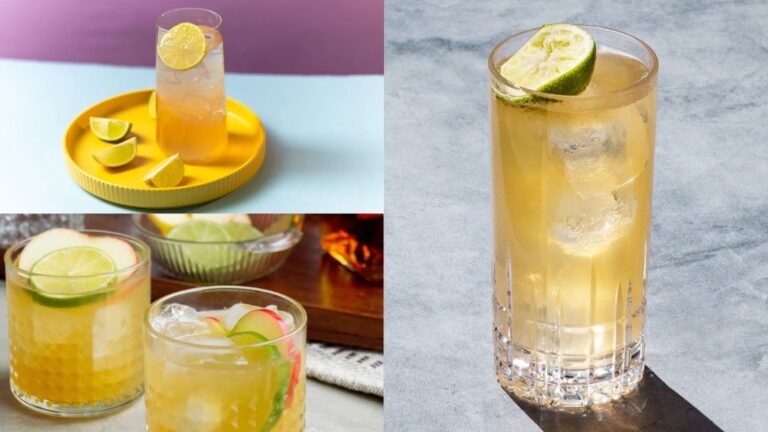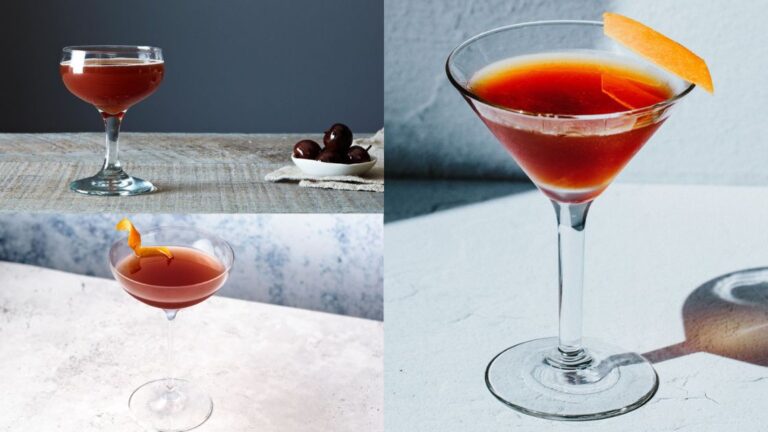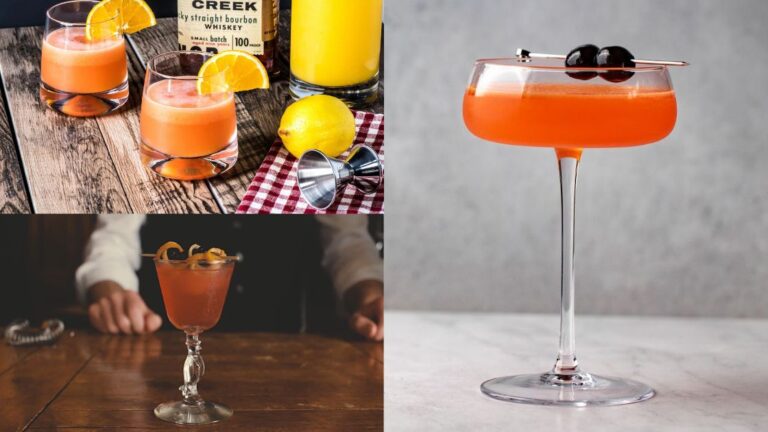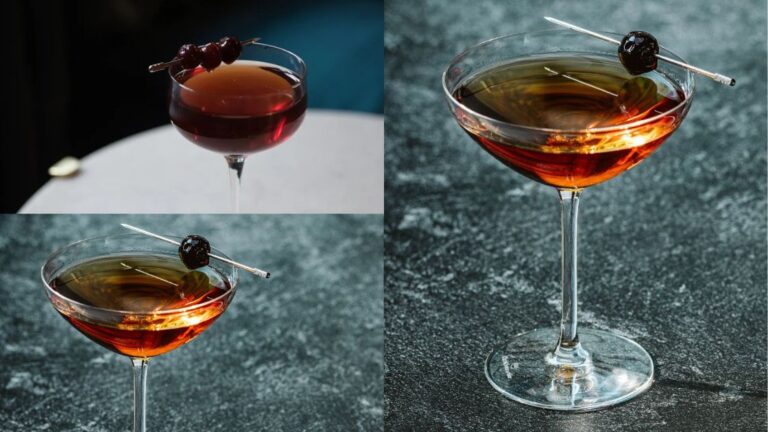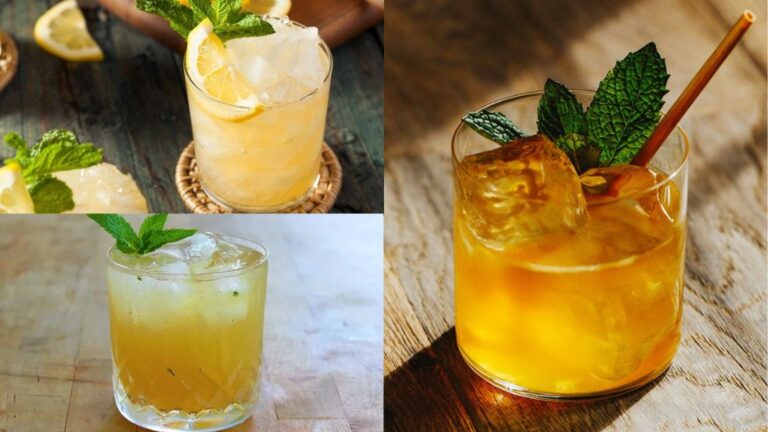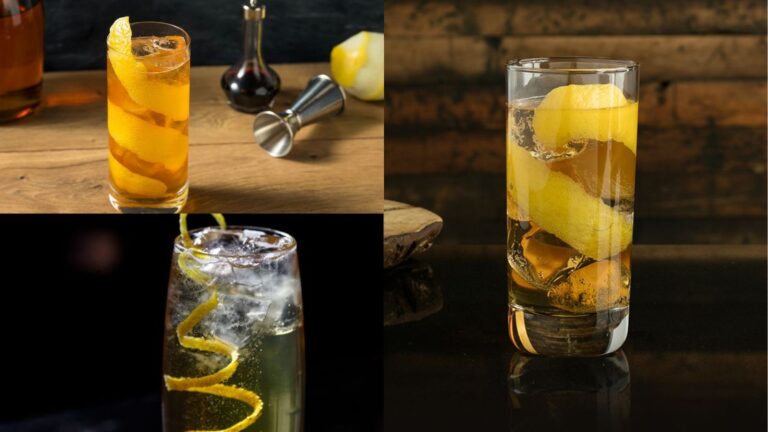Understanding Whiskey and Vodka
Differentiating Whiskey and Vodka
Whiskey and vodka each bring their own flair to the party. Knowing what makes them tick will help you figure out which one might tickle your fancy.
| Aspect | Whiskey | Vodka |
|---|---|---|
| Ingredients | Grains like barley, corn, rye, and wheat | Pretty much anything fermentable, usually grains or potatoes |
| Distillation | Kept at a lower proof to capture grain flavors | Cranked up to a high proof for a neutral, no-nonsense finish |
| Aging | Gets cozy in oak barrels for years | Rarely sees the inside of a barrel for long |
| Flavor Profile | Loaded with complexity, from sweet to smoky or spicy | Clean and straightforward |
| Popularity | Growing crowd of enthusiasts, loved for its unique flavors | A U.S. hit, perfect for mixing drinks like a charm (Switch Vodka) |
Whiskey, made from grains like barley or corn, takes a slow-and-steady approach with aging in oak barrels, creating layers of flavors, whether sweet, smoky, or spicy. Vodka, the chameleon of spirits, is distilled from whatever’s handy—grains or potatoes—and aims for clarity, offering a simple, adaptable character.
Origins and Popularity
Whiskey and vodka didn’t just pop up outta nowhere; their roots run deep through history and culture.
Whiskey:
- Whiskey gets credit from Ireland and Scotland, thanks to monks who toyed around with distilling (Equality Vodka). The Gaelic label, uisce beatha, translates to “water of life.”
- The first whiskey-making antics are recorded back in 1494 in Scotland (Mond Vodka). It traveled through Europe and crossed the pond to America by the 1600s.
- Whiskey earns its stripes with a loyal following, appreciated for its nuanced taste and the art of sipping it neat or over ice (Switch Vodka).
Vodka:
- Staked its claim in Eastern Europe, particularly Russia and Poland, where it began its journey from fermented grains or potatoes.
- These days, vodka reigns as America’s top spirit, making up a hefty slice of spirit sales. Its winning persona lies in its easy-going, mixable, and neutral flavor (Switch Vodka).
- With its subtle character, vodka is a cocktail’s best friend, flying off the shelves at bars and restaurants everywhere.
Whiskey and vodka come with their own stories and vibes. Get to know them so you can snag the right bottle for your taste, whether you’re drawn to whiskey’s bold allure or vodka’s versatile charms.
For more kicks on whiskey types, you can head over to our bits on whisky vs whiskey and scotch vs whiskey.
Whiskey Production Process
Making whiskey is an art with many steps. Every stage adds its own bit of magic to the flavor and personality of each bottle. Let’s take a look at how whiskey is made, from picking the grains to letting it age in barrels.
Grain Selection and Milling
The journey begins with picking the right grains. Barley, corn, wheat, and rye are the usual suspects. They each bring a different taste. Like, bourbon usually gets its kick from corn, while scotch leans on barley’s shoulders (Mond Vodka).
| Grain | Whiskey Type |
|---|---|
| Barley | Scotch |
| Corn | Bourbon |
| Wheat | Various |
| Rye | Rye Whiskey |
Once the grains are picked, they get milled into a powder. It’s like turning grains into flour so they’re ready for the next steps.
Malting and Fermentation
Next up is malting. Those ground-up grains take a bath, starting the germination gig. This dance wakes up enzymes to turn starch into sugars. Once that’s rolling, drying steps in to stop the germination hustle.
Fermentation is where the fun begins. Mix the dried grains with water to create a mash, then heat it up. Enzymes break down the starchy stuff into sugars, which yeast then devours, turning it all into alcohol (Equality Vodka).
Distillation and Aging
Now for the distilling showdown, which talks heart-to-heart with whiskey’s essence. The fermented mash heads to copper stills, going through distillation to leave impurities in the dust. Careful cuts are made in this process, shaping the whiskey’s complexity and feel (ADIFORUMS).
Then, it’s all about patience during the aging in oak barrels. Time in those barrels can span from three years to decades. The oak plays its role, adding richness to the whiskey’s taste, smell, and color through its tango with the drink (Equality Vodka).
| Years | Flavor |
|---|---|
| 3-5 | Light, simple |
| 6-10 | Sweet, balanced |
| Over 10 | Deep, complex, special |
Knowing these steps inside and out helps you appreciate whiskey and maybe choose a glass that hits the spot. If you’re curious how whiskey stacks up against other spirits, check out our reads on whisky vs bourbon and whisky vs whiskey.
Vodka Production Process
How does vodka even happen? Making vodka isn’t what whiskey does. The steps get unique, and you gotta get them if you’re spotting the differences between whiskey and vodka.
Source Materials for Vodka
Vodka can be cooked up from all sorts of plants high in starch or sugar. Think potatoes, wheat, corn, and rye. These guys pack a sugar punch that’s perfect for fermenting into alcohol. (Mond Vodka).
| Source Material | Common Use in Vodka Production |
|---|---|
| Potatoes | Classic choice, brings a silky vibe |
| Wheat | Go-to for that crisp, clean zing |
| Corn | Sweetens the deal a bit |
| Rye | Adds a spicy kick |
Mix these with water and yeast, and boom, you’ve got your vodka mash. The whole thing goes through fermentation, with yeast doing its sugar-to-alcohol magic.
Distillation Techniques
Distillation is vodka’s thing. Unlike whiskey, which wants to keep all those flavors hanging around, vodka goes for top-notch purity and smoothness.
The mash takes a few laps through column stills. Each distillation bumps up the alcohol level and ditches any junk, crafting a sleek, neutral drink. No hanging around aging barrels for this party. (Equality Vodka).
| Distillation Aspect | Process in Vodka Production |
|---|---|
| Number of Distillations | Multiple, to get that squeaky-clean finish |
| Type of Still | Mostly column stills for nonstop action |
| Alcohol Content Post Distillation | Generally hits between 95-96% alcohol by volume |
After hitting those high numbers, water steps in to bring it down to a drinkable 40% ABV.
To learn more about what makes vodka tick and how it sizes up to whiskey, jump over to our whisky vs whiskey page. Getting the lowdown on these drinks helps you spot what makes each one special, whether you’re sipping on whiskey straight or sampling some whiskey and vodka cocktails.
Flavor Profiles and Aging
Time to dive into the fascinating world of whiskey and vodka—where each sip has a story and character all its own. These two drinks, while both spirits, take different roads to tickle your taste buds. Whether you’re sipping whiskey or tossing back vodka, how they’re made and aged (or not aged) gives a lot of insight into what you’re drinking.
Impact of Oak Barrels on Whiskey
Picture whiskey aging in oak barrels, growing richer in taste, smell, and look while it soaks up all that oak goodness. Whiskey chips away at its flavor until it’s just right—from about three years in the barrel to even decades. The longer it sits, the more it picks up unique flavors like delightful vanilla, cozy caramel, and spicy notes that wake your senses (Equality Vodka).
When whiskey sits in oak, it actually takes in parts of the wood, like tannins, lignins, and lactones. These are fancy words for the stuff that makes whiskey taste deep and layered. And choices during its making, like how much of the heads and tails of the distillate to keep, also tweak its final taste. Go for narrow cuts, you get a smooth operator; go wider, and you’ve got a complex beast that needs some time to mellow out.
| Whiskey Type | Aging Period | Common Flavors |
|---|---|---|
| Bourbon | 2-4 years | Vanilla, caramel, oak |
| Scotch | 10-20 years | Smoke, fruit, spice |
| Rye | 4-6 years | Peppery, spicy, woody |
The longer it’s aged, the richer and rarer it becomes—which isn’t just cool, but makes it more pricey too. Keep in mind, if you filter rye whiskey before putting it in barrels, you might strip away some of those flavors you’d want to preserve (ADIFORUMS).
Influence of Distillation on Vodka
Switching gears to vodka—it skips the wait and goes straight to being pure and easy. Vodka’s mission is to be clean, clear, and crisp, thanks to multiple rounds of distillation. Each round ditches impurities and zeros in on a neat, straightforward taste, starkly different from what whiskey can offer (Mond Vodka).
The goal is a super clean spirit—lots of filtering, maybe a little charcoal love to make it even smoother. And since vodka skips that aging dance, it keeps the same crisp character, perfect for those cocktail concoctions you’ve got in mind.
| Vodka Type | Number of Distillations | Characteristics |
|---|---|---|
| Standard Vodka | 2-3 | Smooth, neutral |
| Premium Vodka | 4-5 | Ultra-smooth, clean |
| Flavored Vodka | Varies | Infused flavors from fruits, herbs, spices |
The way vodka is made keeps it incredibly flexible and ready to mix into a ton of different drinks. If you’re feeling curious, you can check out some tips on mixing vodka.
Understanding what goes into these drinks adds a little more enjoyment to each sip. Whether you love whiskey’s aged complexity or vodka’s pure simplicity, knowing what makes them tick can make drinking them that much better. Dive deeper into the world of whiskey with reads on scotch vs whiskey and how to drink whiskey.
Characteristics and Consumption
Flavor Complexity of Whiskey
So, you’ve got whiskey. This ain’t your average Joe of the drink world. It’s packed with flavor – think of it like the ultimate multi-layered cake at a family potluck, waiting to be dissected and savored. The magic starts with how it’s made, especially when those golden drops sit in oak barrels for ages, soaking up hints of vanilla, caramel, and spices. The barrel’s history and how long it hangs out in there only add to its flair.
What’s more, whiskey’s flavor fiesta kicks off from the get-go during fermentation, with key choices made long before touching a drop. The heads and tails from distilling bring depth and stick around for a legendary finish, but trust us, you might wait a while for all those flavors to really settle in.
No two whiskeys are the same, and part of the reason comes down to the grain you’re using. Be it corn, barley, rye, or wheat, each grain tells its own narrative on your palate. Curious about how the party changes from Scottish highlands to Kentucky hills? Peek at our pieces on whisky vs bourbon and scotch vs whiskey.
Versatility and Mixability of Vodka
Vodka is that cool kid in class that gets along with everyone. Renowned for its flexibility, vodka cleans up nice due to being distilled over and over till it’s pure as a snowfall. Its neatness makes it the ultimate chameleon, brill for loads of cocktails. A sleek start means it pairs like a dream with anything from fruit juices and sodas to a muddle of herbs.
This plain Jane of spirits has a serious side, too. Some vodka types go through some hardcore processes, like distilling and filtering through charcoal, to nail down a taste that’s nothing short of silky. If you’re itching to get more adventurous, vodka won’t let you down. Infuse it with anything from a zing of citrus to a whisper of vanilla, and you’re off to the races.
Whether tossed into a cocktail or shining alone, vodka’s charm just doesn’t fade. Check out our guides on how to drink whiskey and whiskey straight for more ways these spirits shine in diverse situations.
| Characteristic | Whiskey | Vodka |
|---|---|---|
| Flavor Profile | Complex, layered | Neutral, clean |
| Key Influences | Oak aging, grain type | Distillation, filtration |
| Mixability | Moderate | High |
| Common Uses | Sipping, cocktails | Cocktails, infusions |
| Alcohol Content (%) | 40-50 | 40-50 |
So, you’re still scratching your head over whiskey versus vodka? It boils down to what gets your taste buds dancing and what occasions you’re serving. Whiskey thrives on complexity, playing the slow jazz, while vodka’s in for a dance-off, dancing freely into mixology. Peek into whisky vs whiskey and whiskey vs beer strength for deeper dives into these timeless tipples.
Health and Nutrition
Calories and Alcohol Content
So, you’re wondering which is the better pick between whiskey and vodka when it comes to health? Let’s break it down by calories and booze power. Knowing what’s in your glass can help you decide what’s best for your body and your vibe.
Calories
Let’s zoom in on what you’re sipping down in terms of calories.
| Drink | Calories (per 1.5 oz) |
|---|---|
| Vodka | 96 |
| Whiskey | 105 |
| Switch Vodka (Light) | 60 – 86 |
A regular shot of vodka packs about 96 calories, and whiskey nudges just above with 105 calories for the same amount. Looking for a lighter shot glass? Switch Vodka steps in with 60 to 86 calories, which is a win if you’re counting every little calorie.
Alcohol Content
Now, about how much kick you’re getting per sip. Vodka and whiskey usually share similar booze strength, around 40% ABV. But, some brands like to mix it up.
| Drink | ABV (%) |
|---|---|
| Vodka | 40 |
| Whiskey | 40 |
| Switch Vodka (Light) | 30 |
Got some higher-octane drinks like cask-strength whiskeys or high-octane vodkas? They’ve got a bit more muscle. For those who don’t want to get knocked off their feet too soon, Switch Vodka keeps the buzz gentle with a 30% ABV.
Congeners and Potential Hangovers
Okay, so let’s talk about the chemicals that make your morning-after feel like a train ran over you: congeners. They’re not all bad, but they do add some oomph to the flavor and the color of your drink.
Congeners
Vodka, especially the clear kinds like Switch Vodka, plays nice here with fewer congeners than the deeper, darker whiskey.
| Drink | Congener Level |
|---|---|
| Vodka | Low |
| Whiskey | High |
Science says drinks with more congeners, like whiskey, might leave you clutching your head a bit longer the next day. So, if you’ve got a big work meeting the next day, maybe vodka’s the safer bet for now.
In the battle of the bottle, it’s all about what matters to you—health goals or avoiding the skull-buster hangovers. If you’re thirsty to learn more, take a detour to our guides on how to drink whiskey and keeping it whiskey straight. Curious what “whiskey drunk” feels like? Check out the scoop on whiskey drunk effect.
